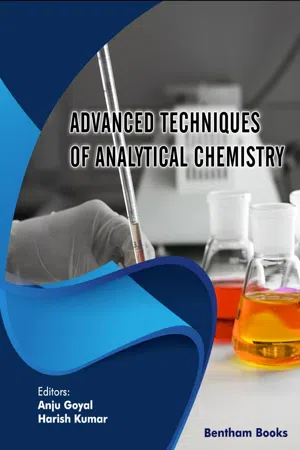Redox Titrations
Sapna Kumari1, *, Anju Goyal1, Madhukar Garg1 1 Chitkara College of Pharmacy, Chitkara University, Rajpura, Punjab, India
Abstract
Redox titrations are the titrimetric method developed to know the concentration of the analyte by creating redox reaction among titrant and analyte. The basic principle involved in the redox titration is the oxidation-reduction reaction, in which electron transfer from one reactant to another reactant takes place. Oxidation means loss of electron and reduction means gain of electron. These must happen at the same time, when a substance loses electrons, there must be some other substance to accept those electrons. The main applications associated with redox titrations are determining the reduction potential of sHdrA flavin from Hyphomicrobium denitrificans, water in non-aqueous solutions, dissolved oxygen in water and determination of alcohol content in the whiskey bottles, etc.
Keywords: Oxidation, Redox titrations, Reduction, Titrimetric methods.
* Corresponding author Sapna Kumari: Chitkara College of Pharmacy, Chitkara University, Rajpura, Punjab, India; E-mail: [email protected] INTRODUCTION
Redox titrations are the titrimetric method based upon the electron transfer between the reactants or change in the oxidation number of the reactant. Popularly, these are well known as oxidation-reduction titrations, as these involve the titration of the reducing agent with a standard solution of an oxidizing agent and vice versa. Most commonly, this method is used in the laboratory for determining the concentration of a given analyte via triggering a redox reaction between the analyte and the titrant. Sometimes, these types of titrations needed a potentiometer or a redox indicator to identify unknown analytes [1].
History And Development Of Redox Titration Method
Redox titrations were announced just after the progression of acid–base titrimetry. The initial methods acquired the benefit of the oxidizing power of chlorine. In 1787, Claude Berthollet introduced a new method for the analysis of chlorine water (a mixture of Cl2, HOCl, and HCl) quantitatively based on its capability to oxidize the indigo dye solution, which is colourless in its oxidized state. In 1814,
Joseph Louis Gaylussac established a similar new method for chlorine in bleaching powder and endpoint was noticed visually in both methods. Because of the oxidation of indigo, the solution remained clear before the equivalence point, whereas solution got a permanent colour, because of unreacted indigo after the equivalence point.
Moreover, with the introduction of oxidizing titrant and reducing titrant such as MnO4-, I2 and Cr2O72- as and S2O32- and Fe2+ respectively, the demand and numbers of redox titrations increased enormously in the mid-1800s. Apart from the successful development of the new titrant, some limitations still exist just because of the lack of suitable indicators required for the titrations. The titrants having different coloured oxidized and reduced forms act as a self-indicator in the redox titration. For instance, the purple coloured MnO4- ion acts as self-indicator, while its reduced form Mn2+ is colourless. Thus, to improve this method, the development of a new visual indicator was mandatory at that time. The first indicator diphenylamine was developed in 1920s, followed by the development of other such indicators making the redox titration a progressive method [1, 2].
Principle and Theory
The basic principle involved in redox titration is the oxidation-reduction reactions, in which electron transfer from one reactant to another reactant takes place. Oxidation involved loss of electron and reduction involved gain of electron. These must happen at the same time; when a substance loses electrons, then there must be some other substance to accept those electrons (Fig. 1).
Fig. (1)) Showing mechanism of redox titration.
In the diagram provided above, it is illustrated that an electron was removed from reactant A, and the reactant got oxidized. Likewise, reactant B was handed an electron and thus got reduced. The process of loss of electrons and increase in the oxidation state of a given reactant is called oxidation whereas, gain of electrons and decrease in the oxidation state of a reactant is called reduction. Oxidation state or oxidation number is the total number of electrons either loose or ...

